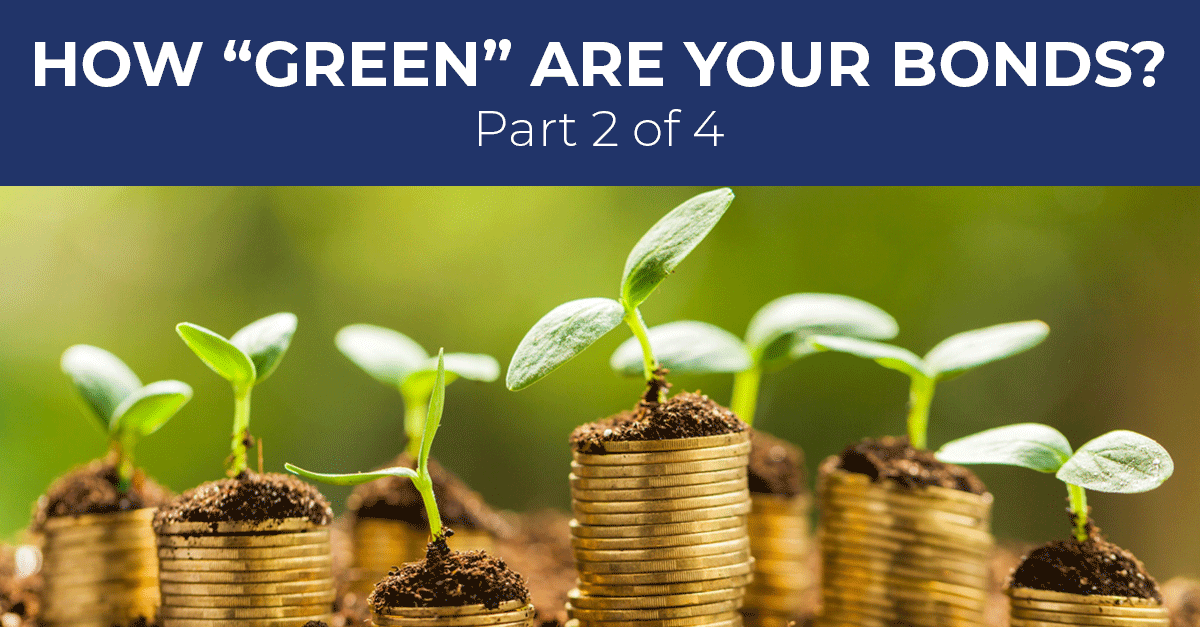
As investors continue to invest in bonds labeled “green,” the team at Community Capital Management (CCM) is committed to sharing thought leadership and educational perspectives on the space. As pioneers in managing impact/ESG investments and fossil fuel free bond portfolios, we incorporate the “environmental” and “social” aspects of ESG investing in multiple elements of our investment process including a use of proceeds analysis for all impact investments, green bonds included.
To learn more about our general views on green bonds and how our investments go beyond those that have a “green” label, read Part I of this blog series. Today’s post focuses on one of the three main sectors of the bond market in which CCM invests.
Taxable Municipals
CCM conducts a use of proceeds analysis and tracks the positive environmental and social outcomes of each investment we make on behalf of our clients. In this blog—Part II of a four-part series—we’re sharing insights on taxable municipals and their positive environmental and/or social impacts.
Taxable municipals, like their counterparts in the tax-exempt market, are backed by state and local governments. Taxable municipals may be used to finance a variety of sustainable initiatives such as:
- Energy efficiency
- Wind turbines
- Solar panels
- Water conservation
- Recycling
- Habitat preservation
- Neighborhood revitalization
- Brownfield redevelopment
- Adaptive reuse
These efforts are having positive sustainable impacts, yet the investments financing these initiatives do not necessarily have a “green” label. We have included below a few of these examples.
Hawaii’s Green Energy Market Securitization Program (GEMS)
GEMS is an innovative, sustainable green financing initiative designed by the Hawaii State Energy Office to make clean energy improvements more affordable and accessible for Hawaii consumers. The program provides low-cost capital to finance solar photovoltaic systems and other clean energy improvements for those who may otherwise have difficulty obtaining financing for these projects. Low-credit homeowners and renters, as well as nonprofits, are among those who will qualify for project financing through GEMS.
Loan benefits to residential homeowners include:
- Owning their own solar system
- Immediate bill savings
- Loan payments beginning after the installation is complete and the system being connected to the grid via a utility net energy meter
Tuolumne Wind Project
The Tuolumne Wind Project is located in Klickitat county, Washington, along the Columbia River. The site has been recognized as one of the most productive wind resource areas in the Western United States. The Project is located on a 6,800-acre plot of land and the wind farm is comprised of 62 wind turbines that are three-bladed, upwind, horizontal-axis wind turbines.
A wind turbine is a type of energy system that transforms the kinetic energy of the wind into electrical energy that can be harnessed for practical use. Power generated by the turbines is transferred to a transformer which raises the voltage to that of the level of electrical collection system. Cables carry the electricity from and within groups of wind turbines and transmit it to a collection substation.
The Project went into commercial operation in 2009 and adds a significant amount of renewable energy to the Turlock Irrigation District’s portfolio. The anticipated yearly energy production is 432,851 megawatt-hours, enough green energy to power 44,000 homes. After the project’s completion, 28% of the district’s energy was qualified as renewable energy, 8% higher than the Board’s adopted goal of 20% by 2017.
Renewable energy provides substantial benefits for our climate, health, and economy:
- Little to no global warming emissions
- Improved public health and environmental quality
- A vast and inexhaustible energy supply
- Jobs and other economic benefits
- Stable energy prices
- A more reliable and resilient energy system
For additional information about CCM’s impact investment portfolios and more case studies, please read our report, “An Approach to Incorporating Sustainable Investing Within Your Bond Portfolio.”
Check back for Part III of this blog series—we’ll be discussing agency CMBS and sharing examples of investments in this sector that finance environmental and social initiatives.
{{cta(‘c6a8e09a-e897-4e3c-8219-42e2c097f5ae’,’justifycenter’)}}
